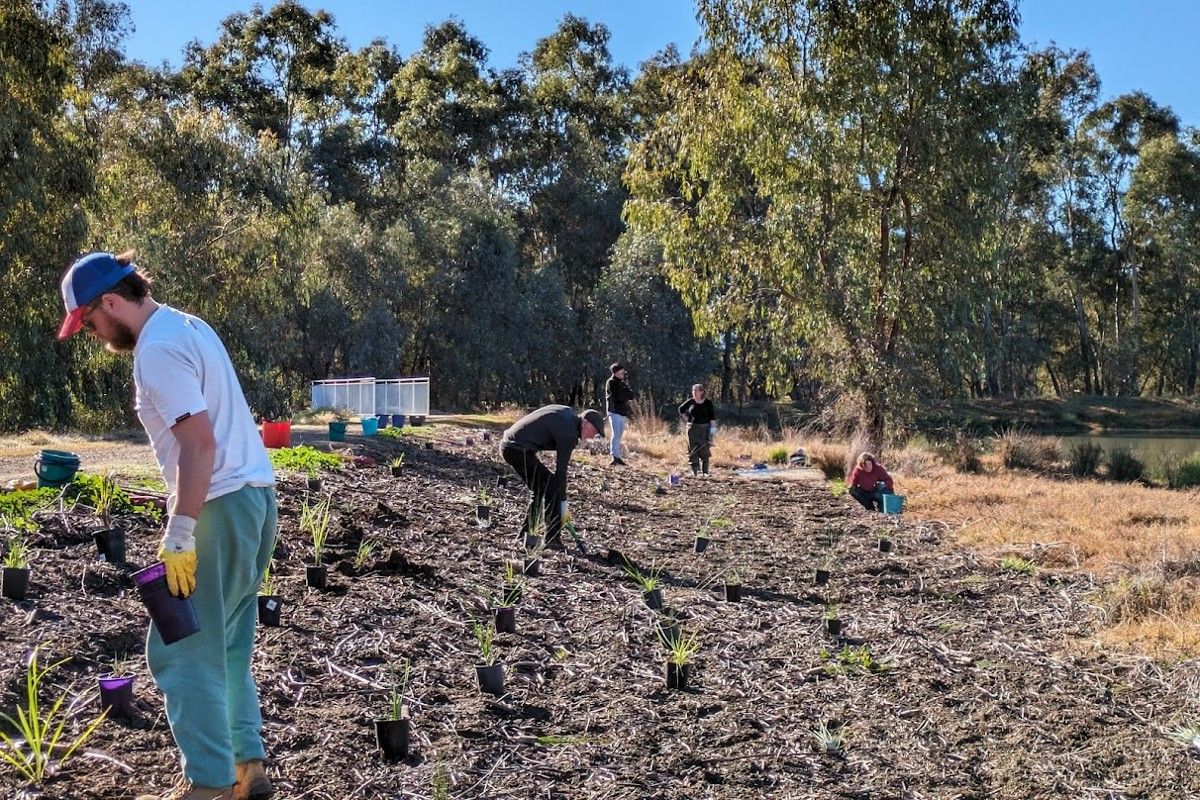Over the weekend our local Marrambidya Wetland received some special treatment led by Council’s Environment team and with the help of community volunteers.
Council officers met with volunteers on Sunday to plant a selection of native seedlings at our Marrambidya Wetland, as well as construct a new artificial reed bed.
Wagga Wagga City Council Environmental Education Officer Christina Reid says this work could not have been completed without the help of local volunteers.
“Thank you to the amazing volunteers who turned up to help us get native seedlings in the ground to establish a native ‘Weavers Garden’ on the edge of the main pond at the Marrambidya Wetland,” Ms Reid said.
“The ‘Weavers Garden’ consists of Indigenous plants that our local cultural weaving groups will eventually be able to harvest from, and it was great to have members from the weaving groups have input into the creation of this garden.

“Our volunteers were also on hand to help us launch another artificial reed bed. We currently have a number of artificial reed beds in our local water ways, including the Wollundry Lagoon and the Marrambidya Wetland.”
The artificial reed beds consist of a buoyant tubular framework covered with a type of natural fibre, creating a ‘mat’ into which different native water reeds and other aquatic plants can be planted.
When the plants have grown, the bed will have some leafy vegetation above to provide a haven for birds, while the roots growing in the water below become important fish habitat and also help to improve water quality as the plants act as a type of water filter.
“Once established, the reed beds provide an important refuge for our native birds and other wildlife, such as turtles, that otherwise may not be able to get away from domestic pets or feral species such as cats or foxes,” Ms Reid said.
“While these plants are seedlings, we need to protect them from our native birds who like to eat the tender young leaves. One way to do this is to cover the platform with bird mesh, but this is generally made of the plastic type nylon material that we try so hard to keep out of the natural environment.
“We decided instead of using the bird mesh, we would reuse some potential landfill, such as old screen doors, that can sit over our seedlings for the next few months.
“Once the plants have reached a certain size, we will remove the screens to give the wildlife full access. The screens will then be reused on the next reed bed.
“If you are out enjoying one of our amazing conservation areas and think you see what looks a little like a dumped door in one of our pristine waterways, don’t worry – It’s just one of our solutions to plastic pollution.”

There are other plans in place to support our local biodiversity, such as the return of the popular One Tree 4 Me, which starts this July.
The Draft Marrambidya Wetland Plan of Management is currently on public exhibition, with Council asking for feedback until Friday 12 July 2024.
The draft plan is a 10-year document that details how Council intends to maintain and develop the wetland for the benefit of our native wildlife, Wiradyuri culture, the community and visitors to Wagga Wagga.






